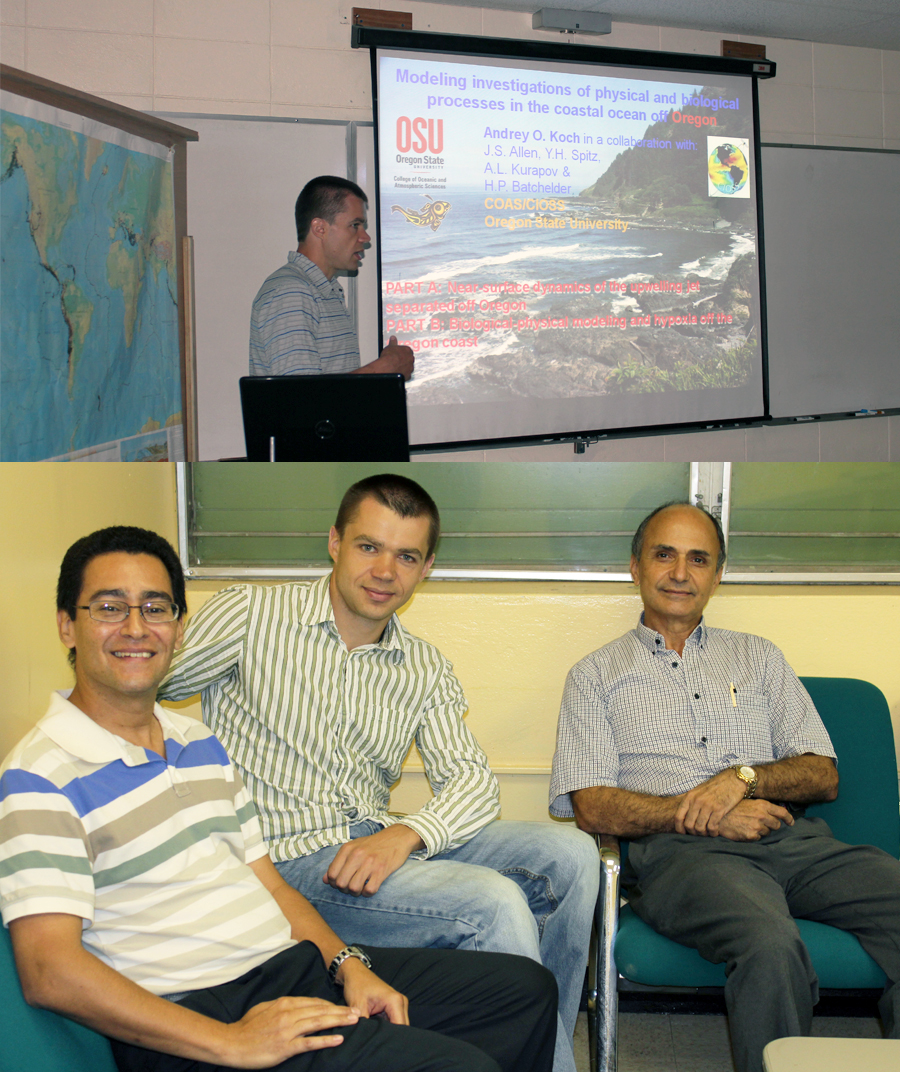Andrey Koch is a researcher from the College of Oceanic and Atmospheric Sciences (COAS) at the Oregon State University working with ocean circulation models in coastal areas. He is original from Russia and has particular interests for learning the research in other regions. Such motivation moved Andrey to request NOAA funding to come to Puerto Rico during July 22 and 23 of 2010. During the first day he met with Jorge Capella who works as a research consultant in the Department of Marine Sciences (DMS) at UPRM. Jorge gave Andrey a broad overview of research being conducted. He also met with Julio Morel who is professor in the DMS and principal investigator of the Caribbean Regional Association (CaRA/CariCOOS). They talked about the projects in observational and modeling efforts being applied to the east Caribbean and areas adjacent to Puerto Rico as part of the CariCOOS. Also, several graduate students show him the modeling at the Caribbean basin with coupled ADCIRC and SWAN models. During lunch time he also met Dr. Yasmin Detres, researcher of the Bio-Optical Oceanography Laboratory, and Dr. Juan G. Gonzalez-Lagoa, a retired professor and an expert in plankton taxonomy and dynamics. In the afternoon Andrey offered a seminar at the DMS-Magueyes Island entitled “Modeling investigations of physical and biological processes off the Oregon coast” where he covered the topics of near-surface dynamics associated with separated jets in the CTZ off Oregon and bio-physical modeling and hypoxia in the Oregon coastal ocean. In the second day, July 23, he spent mainly with Fernando Gilbes, the director of the GERS Lab. He described him the projects dealing with assessing primary production and suspended sediments in the Mayaguez Bay and processing the satellite images and developing algorithms to interpret them. He also showed him the facilities, including the experimental laboratory and the GIS/ENVI laboratory where they process and interpret ocean color images. He also brought him to the study area – Mayaguez Bay and the mouth of the Guanajibo River. On the same day Andrey and Fernando visited Dr. Hamed Parsiani, head of the Electrical and Computing Engineering Department and principal investigator of the NOAA-CREST project at the UPRM. They discussed possible areas of collaboration in spite of the coming 5-year cycle of NOAA/CREST support. Dr. Parsianni showed him the LIDAR Laboratory for atmosphere sensing, the only one operating in a whole Caribbean basin. The same day, Andrey met Prof. Aurelio Mercado who works on modeling the tsunami waves in the Caribbean basin with ADCIRC and HYCOM models. They discussed the modeling details of the area.

Category: Research






